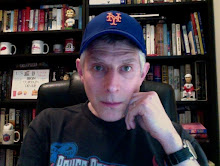"I DRINK DR. PEPPER AND I'M PROUD, I'm part of an original crowd..."
It was the Summer of 1977 and pre-An American Werewolf in London David Naughton was the singing, dancing, pitchman for "the most original soft drink ever," Dr. Pepper (not to be confused with it's evil twin, Mr. Pibb).
 |
| Steve Pecher, 20, an American-born soccer star |
"Be a Pepper!" Naughton said. So, Peppers we were.
For some, part of being a Pepper meant cutting out a couple of proofs-of-purchase from the plastic six-pack carrier and redeeming them for membership in the Dr. Pepper Rookie Soccer Club.
The most original soft drink had partnered with the most original North American Soccer League and its target audience, the young American fan.
Membership had its privileges, limited privileges, but privileges nonetheless. Among them was an iridescent club logo sticker, a full-color poster of reigning NASL rookie of the year Steve Pecher, plus the pocket-sized 96-page Dr Pepper 1977 Pro Soccer Guide.
This was the NASL (relatively) ascendant. America's Division I soccer league formed in 1967 from the remnants of two other struggling organizations. In 1975 they'd added a bona fide international star, Pele.
Born Edson Arantes do Nascimento, Pele had starred for his native Brazil as a 17-year-old in 1958. Though he retired in 1974, "the lure of a new adventure and a three-year contract estimated at $7 million changed all that in June of 1975 when Pele, despite criticism from the press in his country, signed to play with for the New York Cosmos," according to the Dr. Pepper guide.
 |
| 96-pages and still pocket-sized |
Despite losing two franchises -- the Philadelphia Atoms and Boston Minute Men -- the 1977 season brimmed with continental ambition. Eighteen teams would compete from Vancouver to Fort Lauderdale, from Pecher's Dallas Tornado to the defending champion Toronto Metros-Croatia. There was even a team in Hawaii, called -- perhaps unimaginatively -- Team Hawaii. Hartford had a franchise. Las Vegas too.
The Pepper guide was stuffed with stats, facts, rosters and recaps. It even offered critical instruction on How to Play Soccer. But the real prize, retrospectively, was that Pecher poster.
The 20-year-old was a St. Louis native, a rising star, "the best American center back there is, without question," Tornados coach Al Miller attested.
Plus the poster featured full-color logos of every active NASL team. Suitable for framing. Or not.
Pecher had a 22-year pro-soccer career, playing outdoors and in, as well as for the U.S. national team, which he captained from 1978 to '80. The NASL was less fortunate. The signing of Pele and other stars by the Warner Communications-backed Cosmos was part of a league-wide spree to land international stars who would ideally garner publicity, improve the level of play and put more bodies in seats. It didn't last.
The NASL topped out at 24 franchises in 1979 amid both a rising tide of red ink and competition from the Major Indoor Soccer League, which began play in 1978. The NASL tried vainly to fight the upstart MISL on its own astroturf, then folded after the 1984 season.
 |
| Footwork and teamwork |
They also won league titles in 1972, '78, '80 and'82, then lingered on the edge of the public consciousness for decades after their demise.
In 2006, they were the subject of a feature-length documentary, Once in a Lifetime: The Extraordinary Story of the New York Cosmos. For years later, they were revived as part of a new NASL that began play as a Division II league in 2011.
While it failed as a business enterprise, the NASL and Dr. Pepper accomplished their more subliminal, yet more lasting task: imprinting the sport on the minds of American kids. Major League Soccer, a more durable Division I enterprise, began play in 1996. Twenty-one seasons later it features 22 teams, including four bearing the names of their NASL forebears.
Steve Pecher, now 61, coaches girls' soccer in St. Louis.
-- Follow me on twitter @paperboyarchive


No comments:
Post a Comment